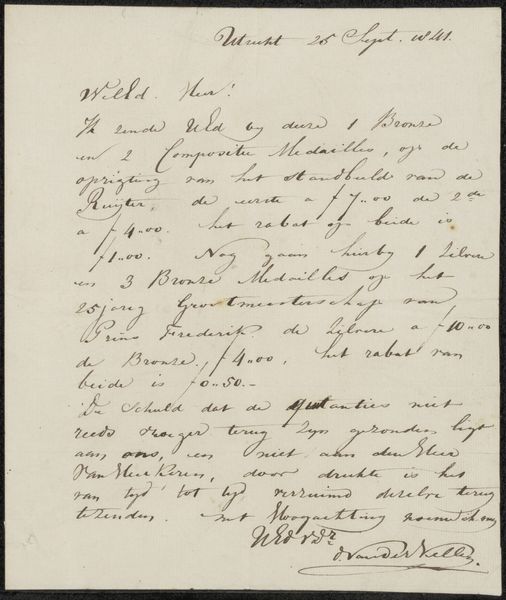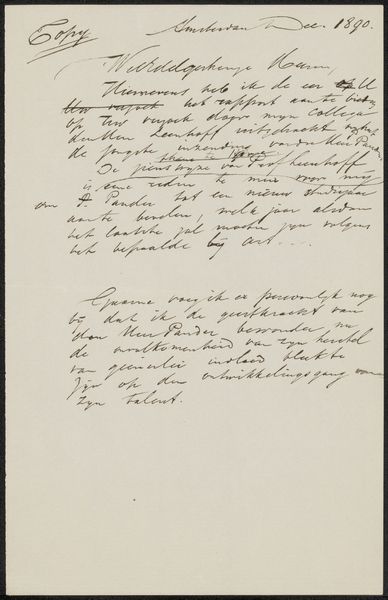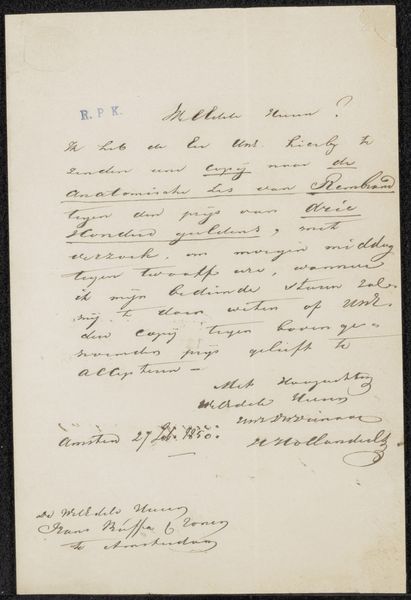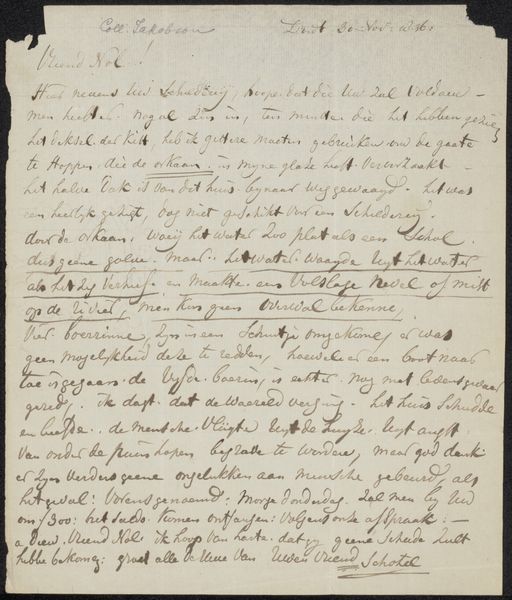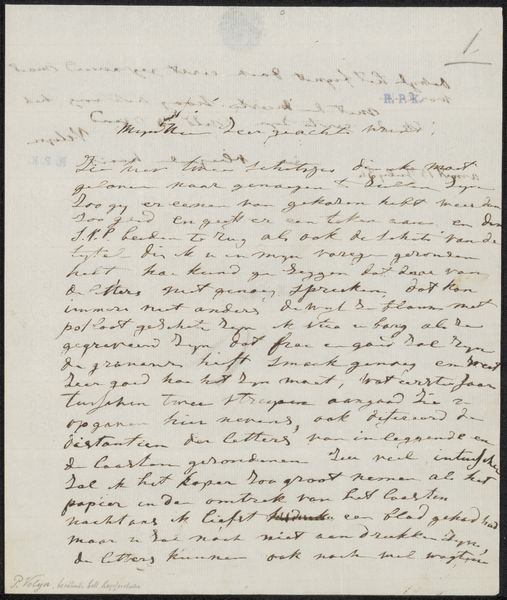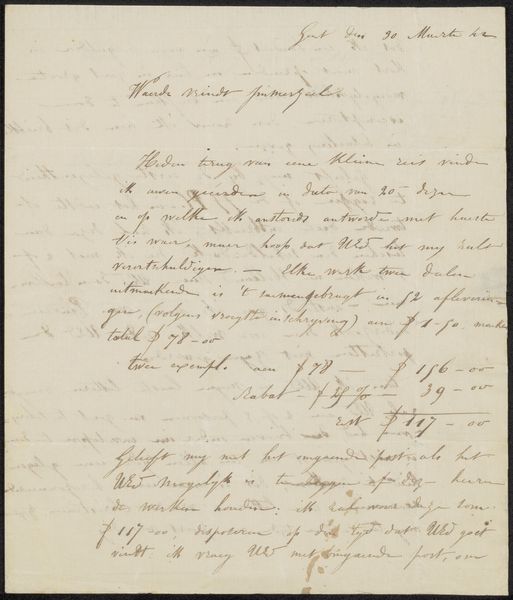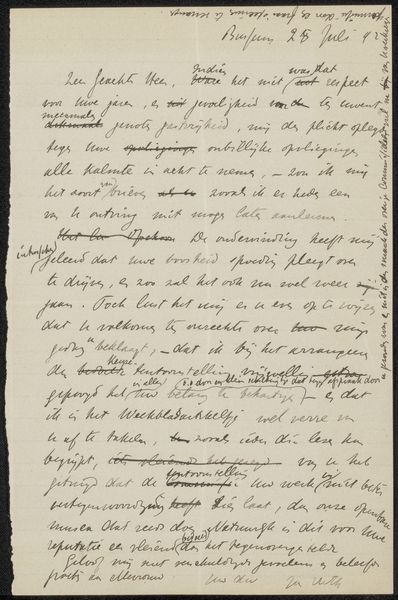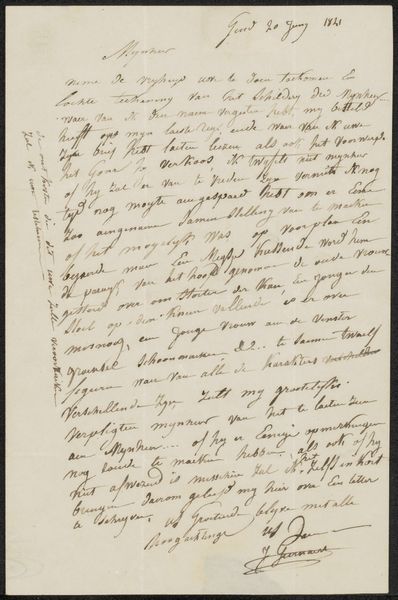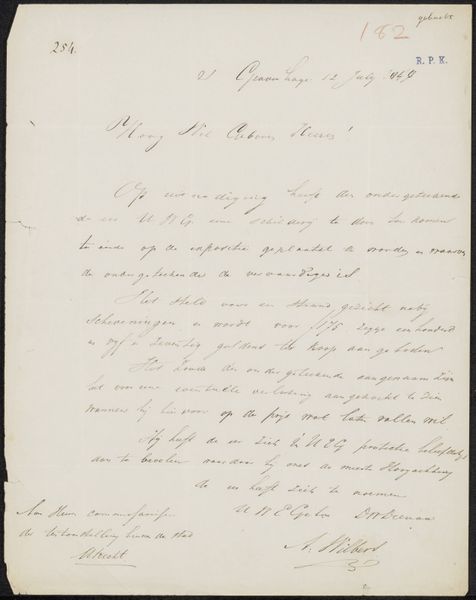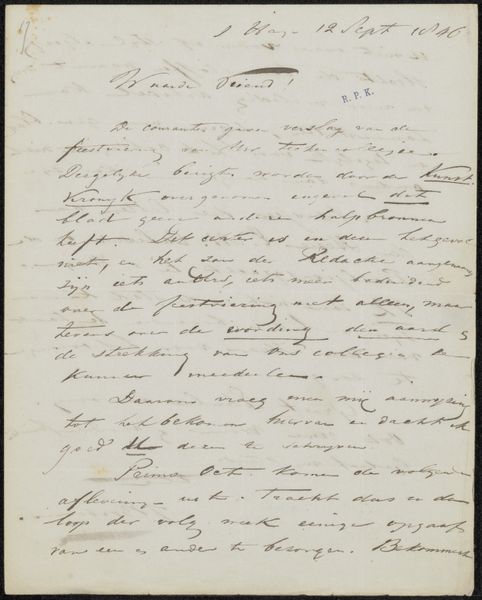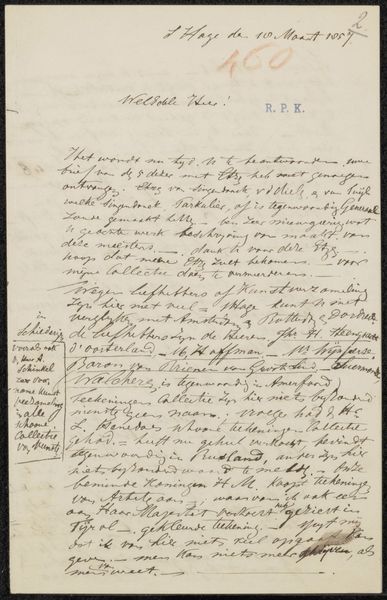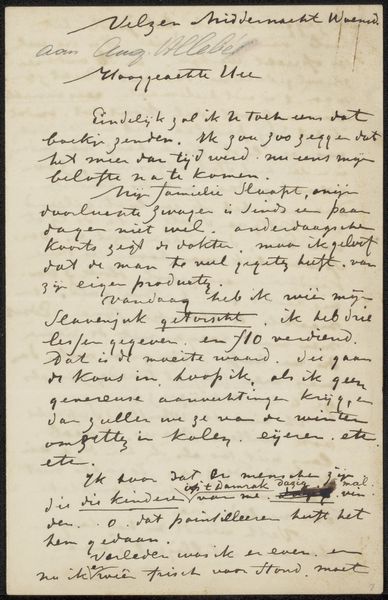
Verklaring van J. Scheltema betreffende de herkomst van de zeilsteen van Tsaar Peter de Grote Possibly 1813 - 1825
0:00
0:00
drawing, paper, ink
#
portrait
#
drawing
#
paper
#
ink
#
history-painting
Dimensions: length 31.8 cm, width 20.1 cm
Copyright: Rijks Museum: Open Domain
Curator: Let's spend a moment with a work from Jacobus Scheltema, a drawing in ink on paper, likely created sometime between 1813 and 1825. Its title is “Verklaring van J. Scheltema betreffende de herkomst van de zeilsteen van Tsaar Peter de Grote” which roughly translates to "Declaration by J. Scheltema concerning the origin of the lodestone of Czar Peter the Great.” Editor: Lodestone...so, immediately, I'm seeing script, like handwriting. Not a flowing, elegant hand, but purposeful, practical. Reminds me of ledger entries or shipping manifests, that kind of mundane administrative function made permanent by art. Curator: Indeed, the drawing seems to be documenting an official statement. It's connected to Peter the Great's time in Zaandam. What resonates with me is how Scheltema, through this medium, attempts to tether a historical event, a legend even, to tangible proof. He seeks to anchor the narrative in the physical world. Editor: And I’m thinking about the making of that ink. Its origins – grinding minerals, mixing it just so with water and perhaps some gum arabic, making sure the carbon black is dispersed perfectly. Then dipping the quill, feeling that slight scratch as the ink transfers to paper, this common material carrier of so much forgotten history. Labor intensive! This wasn't just writing; it was the physical act of documentation. Curator: It’s almost as though Scheltema himself becomes a scribe, ensuring the story of Peter the Great's lodestone isn’t lost to time. He transforms mundane details into something worth preserving, elevating fact-checking to an act of veneration. It's history through material testament. Editor: Exactly. It reveals the layers beneath the supposed ‘greatness’ – the hands, the resources, the production chain needed even for a simple declaration. It undermines a traditional romantic understanding of genius and great figures. Curator: For me, it whispers of the deep human need to leave our mark, to etch our narratives onto the world, be it with grand gestures or meticulous records. The paper itself becomes a stage where history and human effort coalesce. Editor: And I think, that’s why this particular statement feels substantial. Not just about great figures and moments but also humble process: paper-making, the creation and handling of ink... reminders of those laboring in the historical record.
Comments
No comments
Be the first to comment and join the conversation on the ultimate creative platform.

